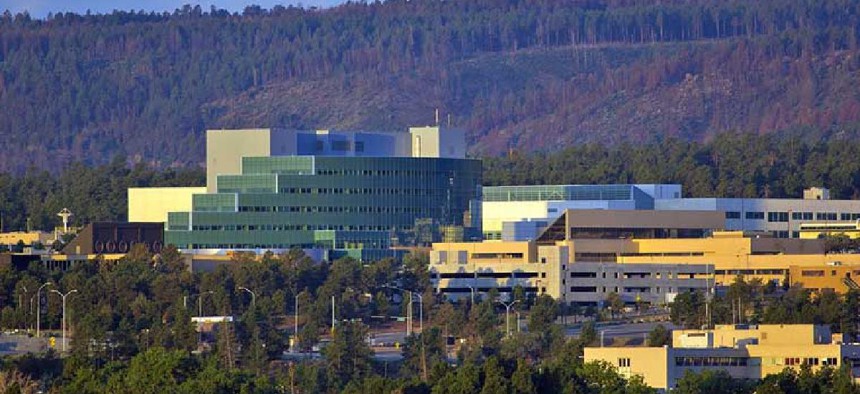Los Alamos deploys drone defenses
The counter-UAS technology is designed to protect a no-drone zone around the lab, which conducts nuclear weapons research.
Los Alamos National Laboratory has set up a system to spot and, if needed, bring down drones that fly into its air space, which is off limits to hobbyist drone flights.
The counter-unmanned aerial system was developed along with the National Nuclear Security Administration and the Federal Aviation Administration to protect a no-drone zone around the New Mexico-based lab, which conducts nuclear weapons research.
The counter-UAS system is still in the testing phase, and it will provide insight for how similar systems can be rolled out in other locations, according to the Los Alamos Monitor.
“To enforce the restricted airspace and No Drone Zone, the laboratory is authorized by federal law to track, intercept, disrupt, control and even take down an unauthorized drone flying over laboratory property,” Los Alamos Lab's Security Director Michael Lansing said in a video announcing the new system.
News coverage of the counter-UAS system and the lab’s announcement have not explained the technology that will make this drone defense a reality, and Los Alamos officials declined to comment.
“The Laboratory does not discuss the specifics of any security capability used to protect our site except to confirm that the Laboratory’s capability is a Government authorized system,” Kevin Roark, a spokesperson for the lab, said in an email.
Counter-UAS technology is emerging as a larger part of the conversation as increasing numbers of drones take off into the nation’s airspace.
Earlier this year, the White House proposed legislation that would allow the Departments of Justice and Homeland Security to use technology to both spot and down drones deemed to be malicious. Legislation has now been introduced in the Senate, and a hearing was held June 6 to discuss it.
There are plenty of options already on the market for counter-drone technology, according to testimony from Angela H. Stubblefield, the deputy associate administrator for security and hazardous materials safety at the Federal Aviation Administration.
“There is a lot of technology out there -- 235 systems available from 155 vendors in 20 countries,” Stubblefield told lawmakers. “There is a plethora of options.”
The issue, she said, is these systems have been built to operate in a military setting. Testing will need to be done to ensure they can make the jump to national airspace, she said.
NEXT STORY: Coast Guard awards $117M drone contract





